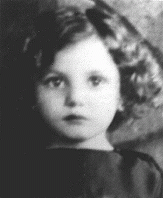You searched for: 格鲁吉亚竞价开户【TG飞机:@bapingseo】免费产品发布推广【TG电报:@bapingseo】重庆谷歌seo新手教学【Telegram:@bapingseo】bob综合网址多少澳洲幸运10计划app下载?7dRPlJ/Q8qdpy.html
<< Previous | Displaying results 451-500 of 538 for "格鲁吉亚竞价开户【TG飞机:@bapingseo】免费产品发布推广【TG电报:@bapingseo】重庆谷歌seo新手教学【Telegram:@bapingseo】bob综合网址多少澳洲幸运10计划app下载?7dRPlJ/Q8qdpy.html" | Next >>
-
Josef Schoen
ID CardJosef was born to German Catholic parents. They lived in a Moravian village near the city of Sternberk in a German-inhabited region known as the Sudetenland. At that time Czechoslovakia was part of the Austro-Hungarian Empire. Upon graduation from a textile school, Josef supervised 600 employees at a silk factory in Moravska Trebova. 1933-39: After serving in the Czechoslovak army, Josef became a Jehovah's Witness in Prague, and refused to have anything more to do with the military, following the…
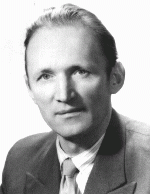
-
Martin Hans Munzer
ID CardHans was born to Jewish parents in a town in northwestern Germany. The family moved to Berlin when Hans' father obtained a post there as a history teacher in a secondary school. After graduating from university, Hans married and settled with his wife Margaret in an apartment in Berlin. In 1920 their child Wolfgang was born. Hans worked as foreign representative for a sewing notions company. 1933-39: When the Nazis won the election a few weeks ago, Hans was afraid for people like himself who are active…
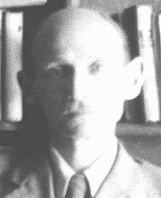
-
Nelly Adler
ID CardNelly was the youngest of three daughters born to Jewish parents in Liege, a French-speaking industrial city in eastern Belgium. Her Yiddish-speaking parents had moved there from Czechoslovakia a year before Nelly was born. The Adlers were one of only a few Jewish families in the largely Catholic city. Nelly grew up speaking French with her friends at school. 1933-39: The Adler's apartment was above a cafe and across the street from a Catholic church. Her parents ran a successful tailoring business from…
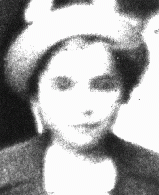
-
Golda (Olga) Bancic
ID CardOlga was born to a large Jewish family living in the Bessarabia province when it was still part of the Russian Empire. In 1918 the province was annexed by Romania. When Olga was 12 years old, she was arrested for the first time for having participated in a strike at the mattress factory where she worked. Despite her youth, she was put in prison and beaten. 1933-39: Olga was an active and vocal member of the local workers' organization. She had been arrested and imprisoned so often that she simply…
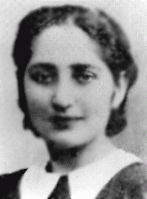
-
Rubin Segalowicz
ID CardRubin was the second of four children born to a Jewish family in the northeastern Polish town of Ivenets, approximately 60 miles west of Minsk. His father was a butcher. Rubin attended Ivenets' public elementary school until the age of 10, when he transferred to the Mirar Yeshiva to study Jewish law. 1933-39: In 1936, after completing yeshiva, Rubin made his living as a house painter. In Ivenets people would stand in front of Jewish stores and drive customers away, telling them not to buy from Jews. In…
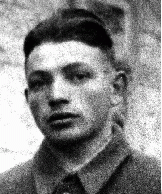
-
Nesse Galperin
ID CardNesse was born to an observant Jewish family in Siauliai, known in Yiddish as Shavl. Her parents owned a store that sold dairy products. The city was home to a vibrant Jewish community of almost 10,000 people. It had over a dozen synagogues and was renowned for its impressive cultural and social organizations. 1933–39: Nesse's family was very religious and observed all the Jewish laws. She attended Hebrew school and was raised in a loving household, where the values of community and caring always were…
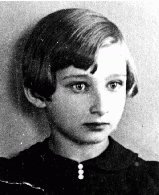
-
Otto-Karl Gruenbaum
ID CardBorn to a Jewish father and a Catholic mother, Otto grew up in a city well known for its musical tradition. The younger of two children, Otto began studying the piano at age 10. After entering the Vienna Conservatory of Music, he gave his first concert at age 14. Encouraged by Maestro Bruno Walter, he hoped to become a conductor and concert pianist. 1933-39: After Germany annexed Austria in March 1938, Otto was kicked out of the Vienna Conservatory. One night, two men ordered him to go with them to a…
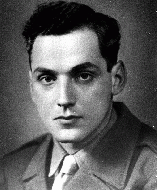
-
David Morgensztern
ID CardThe second of four children, David, or Duvid as he was called by his family, was born to Jewish parents living 35 miles east of Warsaw in the small predominantly Jewish town of Kaluszyn. David's mother and grandmother ran a newspaper kiosk in town, and his father worked as a clerk in the town hall. David attended public elementary school. 1933-39: War has broken out between Poland and Germany. Many people are afraid of what might happen if the Germans occupy Poland and have decided to flee to the Soviet…
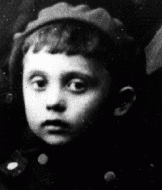
-
Sophie Weisz
ID CardSophie was born to a prosperous Jewish family in a village near the Hungarian border known for its winemaking and carriage wheel industries. The village had many Jewish merchants. Her father owned a lumber yard. Sophie loved to dance in the large living room of their home as her older sister, Agnes, played the piano. 1933-39: Sophie's father believed in a Jewish homeland and sent money to Palestine to plant trees and establish settlements there. When she was 10, she was sent to a school in nearby Oradea…
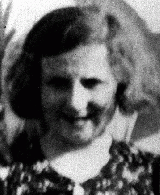
-
Terez Goldberger Kalman
ID CardTerez came from a religious Jewish family. She and her husband, Samuel, raised eight children in Satoraljaujhely, in northeastern Hungary. The Kalmans lived on the outskirts of the city, and in the 1920s they ran a canteen for the soldiers who lived in the nearby barracks. The Kalmans were proud Hungarians; one of their sons had died in World War I. 1933-39: Since Samuel died a few years ago, Terez has been alone here in her house in Satoraljaujhely. Many of her children live nearby, though, so her home…
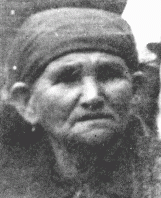
-
Aranka Ecksdein Muhlrad
ID CardAranka was the youngest of 10 children born to Jewish parents living in the highlands of Slovakia. While visiting Budapest to attend her sister's marriage, she was introduced to Jeno Muhlrad, a pharmacist. They were married and the couple moved in with Jeno's father and sisters who lived in Ujpest, a suburb of Budapest. Aranka had two children--Eva, born in 1924, and Andras, born six years later. 1933-39: Aranka's husband has leased his own pharmacy in downtown Ujpest so they can finally afford to move…
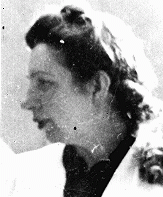
-
Abram Kisielnicki
ID CardThe oldest of three children, Abram was born to Jewish parents in the small, predominantly Jewish town of Kaluszyn, 35 miles east of Warsaw. Abram's father owned a wholesale grocery store, a restaurant and a gas station, all of which were located on the heavily traveled main road. Abram went to public elementary school and also received religious instruction. 1933-39: Abram was 21 when the Germans invaded Poland. Abram, his father, and his brother Majlech fled eastward towards the Soviet Union because…
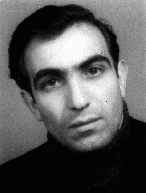
-
Welwel Wainkranc
ID CardThe third of five brothers, Welwel was born to Jewish parents who lived 35 miles east of Warsaw in the small predominantly Jewish town of Kaluszyn. His father was a cattle merchant who purchased cows and sold the meat to butchers in the Warsaw region. Welwel spent most of his free time with a group of Jewish friends who lived in his neighborhood and who attended the same public school. 1933-39: Every summer evening Welwel, Abram Kisielnicki, and some other pals, like to stroll along Kaluszyn's main…

-
Arlette Waldmann
ID CardArlette's Russian-Jewish mother and Romanian-Jewish father had studied medicine together in Paris. After finishing medical school, they married and decided to set up practice in Broncourt, a farming village of 300 inhabitants in northern France. 1933-39: Arlette's father was an old-fashioned doctor who made housecalls, by bicycle at first, then on a motorcycle, and finally, in a car. His patients looked forward to seeing him and held him in high esteem, always offering him coffee and schnapps. Even after…
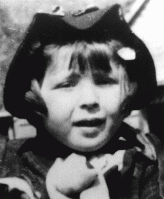
-
Irena Elzbieta Wos
ID CardIrena was the second of four children born to religious Roman Catholic parents in Poland's capital of Warsaw. Irena's father owned a successful textile business. When Irena was 10, her family moved to a comfortable apartment near the Royal Castle and the Vistula River. In 1930 Irena entered a private grade school. 1933-39: At 14 Irena began secondary school. She was a good student and wanted to be a doctor. On September 1, 1939, the day she was supposed to begin the new school year, the Germans attacked…

-
Miksa Deutsch
ID CardMiksa was the youngest of four children born to religious Jewish parents. The Deutches lived in the town of Bistrita in Transylvania, a region of Romania that belonged to Hungary until 1918. After 1910, the family lived in nearby Viseu de Sus. In 1922 Miksa moved to Budapest, Hungary, where he and his older brother, Pal, opened a business selling matches. In 1928 Miksa married Kornelia Mahrer. 1933-39: Miksa and Kornelia had three children, whom they raised with a religious education. Miksa and his…

-
The "We Will Never Die" Pageant
Article"We Will Never Die" was a 1943 musical stage performance that raised awareness among Americans about the murder of European Jews. Learn more.

-
Léon Degrelle
ArticleLéon Degrelle was an extreme right-wing Belgian politician and Nazi collaborator. After the war, he continued to spread pro-Nazi propaganda for decades. Learn more.
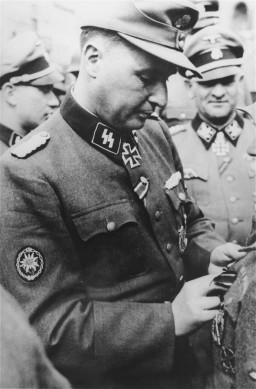
-
Wallace Witkowski describes harsh living conditions for non-Jews in Poland
Oral HistoryWallace and his family were Polish Catholics. His father was a chemical engineer and his mother a teacher. The Germans occupied Kielce in 1939. Wallace witnessed pogroms against Jews in 1942. Wallace was active in the anti-Nazi resistance, acting as a courier between partisan groups. In 1946, in liberated Poland, Wallace witnessed the Kielce pogrom. He was reunited with his father in the United States in 1949; other family members followed. The Communist regime in Poland, however, denied his only sister…

-
Frank Bleichman describes a German raid, with assistance from individual Poles, on a group of Jewish partisans
Oral HistoryFrank was one of seven children born to a religious Jewish family in Kamionka, in the Lublin district of Poland. Germany invaded Poland in September 1939. When deportations of Jews from the Lublin area began in 1942, Frank joined a group of Jewish partisans who roamed the forests in search of weapons and food. After obtaining weapons by posing as Soviet paratroopers, they were able to defend themselves against German raids and take revenge against collaborators. They gradually made connections with Polish…
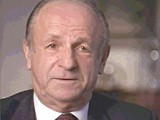
-
Historian Peter Black describes researching evidence for an OSI case
Oral HistoryIn the 1980s and 1990s, historian Peter Black worked for the US Department of Justice Office of Special Investigations, as part of a team tracking and prosecuting suspected war criminals. Black later served as the Senior Historian at the United States Holocaust Memorial Museum.

-
Leo Schneiderman describes conditions in the Lodz ghetto
Oral HistoryThe Germans invaded Poland in September 1939. Leo and his family were confined to a ghetto in Lodz. Leo was forced to work as a tailor in a uniform factory. The Lodz ghetto was liquidated in 1944, and Leo was deported to Auschwitz. He was then sent to the Gross-Rosen camp system for forced labor. As the Soviet army advanced, the prisoners were transferred to the Ebensee camp in Austria. The Ebensee camp was liberated in 1945.

-
The Warsaw Ghetto
Animated MapView an animated map showing key events in the history of the Warsaw ghetto, the largest ghetto established by the Germans in occupied Europe.
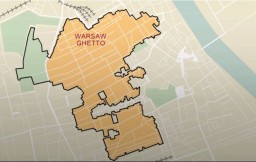
-
Hainewalde
ArticleThe SA established a protective custody camp at Hainewalde in March 1933. Well-known journalist and writer Axel Eggebrecht was among its early prisoners.
-
Glossary
ArticleAntisemitism: hostility toward or hatred of Jews as a religious or ethnic group, often accompanied by social, economic, or political discrimination. Appellplatz: German word for roll call square where prisoners were forced to assemble. Aryan: Term used in Nazi Germany to refer to non-Jewish and non-Roma (Gypsy) Caucasians. Northern Europeans with especially "Nordic" features such as blonde hair and blue eyes were considered by so-called race scientists to be the most superior of Aryans, members of a…
-
Theresienstadt: Concentration/Transit Camp for German and Austrian Jews
ArticleLearn about the role of Theresienstadt in the deportation of German and Austrian Jews to killing sites and killing centers in the east.

-
Culture in the Third Reich: Disseminating the Nazi Worldview
ArticleIn Nazi Germany, a chief role of culture was to disseminate the Nazi worldview. Arts and cultural organizations were to be synchronized with Nazi ideology and policy.

-
Anne Frank: Diary
ArticleThe Diary of Anne Frank is often the first exposure readers have to the history of the Holocaust. Learn about Anne's diary, including excerpts and images.

-
Ardeatine Caves Massacre
ArticleNow a national memorial site, the Ardeatine Caves outside Rome were the site of a German reprisal for a bombing by Italian resistance operatives in March 1944.
-
Vienna
ArticleNazi Germany annexed Austria in March 1938. Learn about Austria’s capital, Vienna, which at the time was home to a large and vibrant Jewish community.
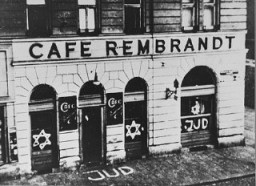
-
Tattoos and Numbers: The System of Identifying Prisoners at Auschwitz
ArticleLearn more about how the Nazis identified and tattooed prisoners at the Auschwitz concentration camp complex.
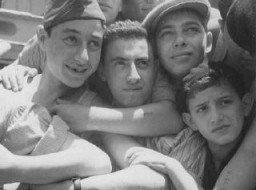
-
Les Milles Camp
ArticleUnder the Vichy regime, the Les Milles camp held foreign Jews before emigration or, in most cases, deportation to German concentration camps and killing centers.

-
Adolf Hitler: Key Dates
ArticleLearn about some key dates in the life of Adolf Hitler, one of Europe's most ruthless dictators, who led the Nazis from 1921 and Germany from 1933-45.

-
Axis Powers and the Holocaust
ArticleEach of Germany’s six European Axis allies participated in the “Final Solution” by murdering Jews or by transferring them to German custody. Learn more.
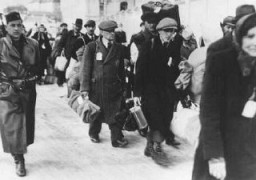
-
Jacob Wiener
ArticleExplore Jacob Wiener’s biography and learn about his experiences during Kristallnacht in Würzburg, Germany.

-
Polish hostages arrested during the "pacification" of Bydgoszcz
PhotoPolish hostages in the Old Market Square. Bydgoszcz, Poland, September 9–10, 1939. Just after the German invasion of Poland, armed groups of ethnic Germans in the city of Bydgoszcz staged an uprising against the local Polish garrison. This was put down by the next day, one day prior to the entrance of German troops in the city on September 5. A local command structure was quickly put into place by Major General Walter Braemer, and in response to continued attacks upon German personnel in the city,…

-
British Forces Approach Neuengamme
Timeline EventMay 4, 1945. On this date, the SS troops evacuated approximately 9,000 prisoners from Neuengamme in advance of the British troops' approach.

-
Death Penalty for Aiding Jews
Timeline EventSeptember 5, 1942. On this date, Germans issued this poster announcing the death penalty for anyone found aiding Jews who fled the Warsaw ghetto.

-
The Armenian Genocide (1915-16): In Depth
ArticleLearn more about the Armenian Genocide, which was the physical annihilation of ethnic Armenian Christians living in the Ottoman Empire between 1915-1916.
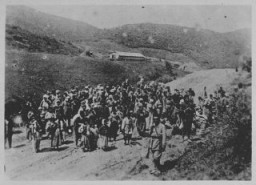
-
Warsaw
ArticleIn October 1940, Nazi authorities established the Warsaw ghetto. Learn more about life in the ghetto, deportations, armed resistance, and liberation.

-
Selma (Wijnberg) Engel describes forced labor sorting the clothing and possessions of people deported to Sobibor
Oral HistorySelma was the youngest of four children born to Jewish parents. When she was 7, Selma and her family moved to the town of Zwolle where her parents ran a small hotel. When the Germans invaded the Netherlands in 1940, they confiscated the hotel. The family had to live in a poor Jewish section of the town. Selma went into hiding but was betrayed and then sent to the Westerbork camp. In April 1943 she was deported to Sobibor, where she worked in the clothes sorting area. There, the prisoners tried to pocket…

-
Felix Horn describes antisemitism in Lvov and conditions in the Janowska camp
Oral HistoryFelix was born to an assimilated Jewish family in Lublin, Poland. His father was a locksmith and his mother was a singer. Following the German invasion of Poland on September 1, 1939, Felix fled east to Rovno and then to Soviet-occupied Lvov, where he was accepted at a medical school. After the German invasion of the Soviet Union in June 1941, Felix was taken to a labor camp. He escaped and returned to Lublin, and found that his family had been forced into the ghetto established there. After the…

-
Combating Holocaust Denial: Evidence of the Holocaust presented at Nuremberg
ArticleAt the Nuremberg trials, Allied prosecutors submitted documentation left by the Nazi state itself. This evidence is a lasting refutation of attempts to deny the Holocaust.
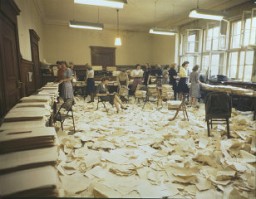
-
1943: Key Dates
ArticleExplore a timeline of key events during 1943 in the history of Nazi Germany, World War II, and the Holocaust.

-
Charles E. Coughlin
ArticleCharles Coughlin, Catholic priest and populist leader, promoted antisemitic and pro-fascist views. In the 1930s, he was one of the most influential public figures in the US.
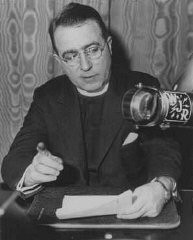
-
The Rescue Mission of Gilbert and Eleanor Kraus
ArticleIn the spring of 1939, Gilbert and Eleanor Kraus rescued 50 Jewish children from Vienna, Austria, by bringing them to the United States. Learn about their mission.
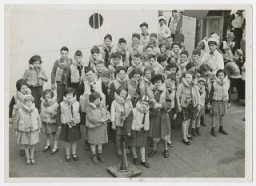
-
Gerd Jacob Zwienicki
ID CardGerd was the eldest of four children. His father, Josef, had left Ukraine in 1913 and opened a bicycle sales and repair shop in Bremen. His mother, Selma, was descended from a distinguished Jewish family and had been a kindergarten teacher and a bookkeeper for a large firm. As a child, Gerd experienced the hardships of the Depression and witnessed the violent street fights between the Nazis and their political opponents, the Communists and Socialists. 1933–39: When the Nazis came to power in 1933, Gerd…
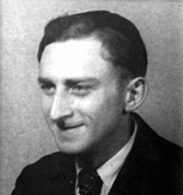
-
Nazi propaganda poster titled “The Stalin Constitution?”
ArtifactNazi propaganda poster titled “The Stalin Constitution?” printed October 10, 1943. The Nazis often used propaganda in occupied territories to secure the compliance and even support of local populations. In Ukraine and other occupied regions of the Soviet Union, the Nazis created propaganda that exploited preexisting discontent with the Soviet regime. They also tried to exploit preexisting anti-Jewish sentiment and sharpen divisions between Jews and non-Jews. One way of achieving this was by creating…
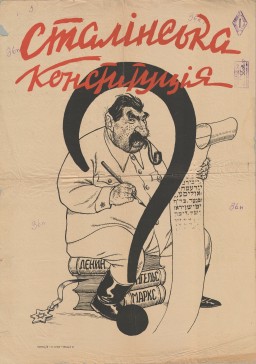
-
Leon Rupnik
ArticleDuring World War II, Slovene general Leon Rupnik collaborated with the forces of Fascist Italy and Nazi Germany. Rupnik was appointed president of the Provincial Government of the German-occupied Province of Ljubljana in 1943. He was convicted of treason and executed in 1946. In 2020, his sentence was annulled on a technicality.
-
Lilly Appelbaum Malnik
ID CardLilly Appelbaum was born in Antwerp, Belgium to Jewish parents, Israel and Justine. Lilly's parents separated before she was born. Her father immigrated to the United States. Lilly had two older siblings, Leon (born 1927) and Maria (born 1925). She lived with her maternal grandparents in Antwerp. During the week, her mother lived in Brussels, where she operated a small workshop that made raincoats. 1933-39: Lilly and her grandparents lived in a predominantly Jewish neighborhood in Antwerp. She went to a…
